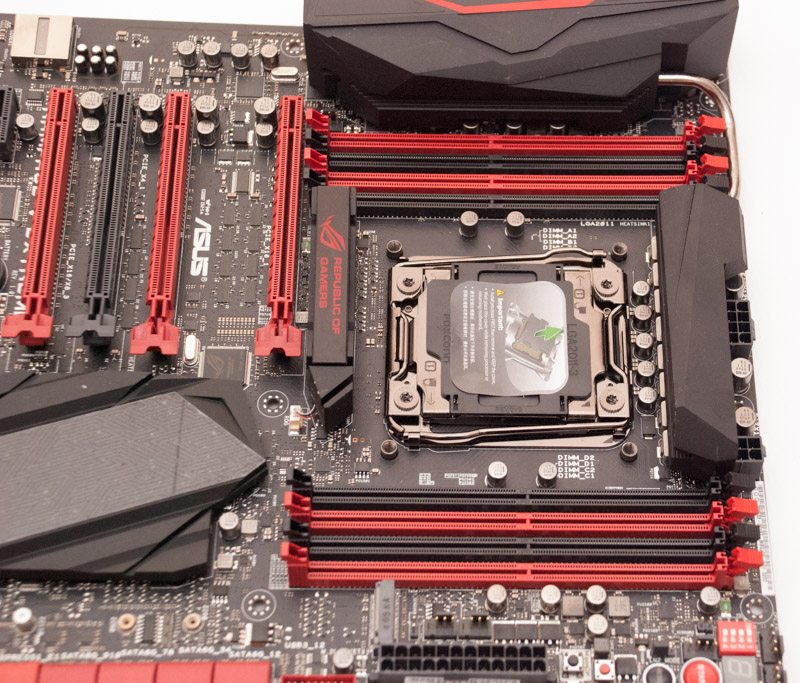ASUS Rampage V Extreme (LGA 2011-3) Motherboard Review
A Closer Look & Layout Analysis
 With a board that is rammed with so many features the layout is important. ASUS have had to make many tough design choices to fit so much onto this board. Sure with an E-ATX footprint it isn’t exactly small but with how much connectivity it has the density and design work is incredible. Just look at how they managed to squeeze the M.2 port in next to the SATA ports and memory lanes/ chipset heastsink.
With a board that is rammed with so many features the layout is important. ASUS have had to make many tough design choices to fit so much onto this board. Sure with an E-ATX footprint it isn’t exactly small but with how much connectivity it has the density and design work is incredible. Just look at how they managed to squeeze the M.2 port in next to the SATA ports and memory lanes/ chipset heastsink.

Down by the PCH we find 12 SATA ports and two SATA Express ports. There’s also a USB 3.0 header.

Moving up that side of the board we find the OC area with all the buttons: start, reset, retry, memOK, safe boot, slow mode, PCIe lane switches and an LN2 mode jumper. The debug LED is also there for troubleshooting with all the respective error codes provided in the manual.

Moving down to the base of the board and we find yet more buttons and connectivity: a BIOS toggle switch, the KeyBot button, USB headers, fan headers and more.

Further along the bottom we find the BIOS chips, a SoundStage button, a TPM header, molex power for the PCIe lanes and the front panel audio connection.

In total we find a huge amount of PCIe lane connectivity with spacing to allow for 4-Way GPU configurations.

At the rear I/O there are a staggering 10 USB 3.0 ports, I’m a little surprised to see only one ethernet port – I myself would have loved to see dual LAN in there even if it meant sacrificing something like two USB 3.0 ports or the WiFi placement.
At the top of the board we can see dual power connectors for the CPU, only the 8 pin is required but the 4 pin is there for extra power if you’re really pushing the voltages high. You can also get a clear view of the new DirectCU implementation for the VRM.

Around the CPU socket we find a couple of heatsinks and we can see the LED cable connection to the ROG branded heatsink, you can alter the lighting effects on this in the BIOS.

On the base of the board we find reinforced backplates for the socket, VRM heatsink and chipset heatsink. ASUS are the only vendor who go to this much effort with ensuring stability of the motherboard PCB.

That’s the board stripped down and shown off so let’s jump into taking a closer look at the rest of the R5E package.









